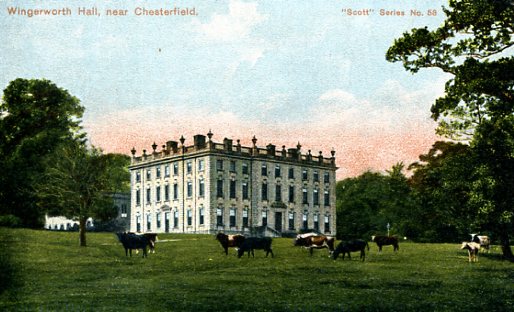In this blog we take a brief look at some new sources for the history of Wingerworth that have been identified. They’ll help us in our new account of Wingerworth, based largely on the work of David Edwards, which the Derbyshire VCH Trust hopes to published in 2023.

Reconstructing the history of Wingerworth in detail has always been difficult because of the loss of virtually all the muniments of the Hunloke family, who were the main owners in the parish between 1582 and 1920. Thanks to the power of electronic finding aids, however, a considerable amount of new light has been shed on both the Hunloke family and Wingerworth generally by a study of a lengthy series of law suits dating from between 1648 (when Sir Henry Hunloke, who fought for Charles I in the Civil War died aged only 29) and the 1680s.
These cases, mostly heard in the Court of Chancery, involved his son and heir, his widow, her second husband, his mother and her second husband, the executors of his will, and a long list of people who claimed that they were owed money by him. Taken together they show that Sir Henry was already in debt when he unwisely committed himself to the King’s cause in 1642, as a result of which he was heavily fined by Parliament, which made his financial position much worse. The estate was further weakened by nearly forty years of litigation over his will.
Another point that emerges from the lawsuits is that the industrial resources of the Wingerworth estate were seen as important in the mid seventeenth century. Litigants were very interested in the revenue from coal and ironstone mines, the ironworks and the corn mill on the estate, as well as the rents from farms and cottages.
The new information gleaned from some twenty different cases will be incorporated into an account of Wingerworth, based largely on the work of David Edwards, which the Derbyshire VCH Trust hopes to publish in the first half of 2023.
